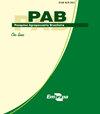甜瓜中β -胡萝卜素含量的遗传
IF 0.7
4区 农林科学
Q3 AGRICULTURE, MULTIDISCIPLINARY
引用次数: 0
摘要
摘要本研究旨在确定甜瓜(Cucumis melo)中β -胡萝卜素含量的遗传规律。AC-16加入(甜瓜亚种)。将-胡萝卜素含量低、中果皮白色的甜瓜(melo var. acidulus)与Vedrantais品种(C. melo subsp.)杂交。甜瓜变种哈密瓜)-具有高β -胡萝卜素含量和鲑鱼色的中果皮-获得F1, F2, BC1和BC2代。对AC-16和‘Vedrantais’亲本、F1和F2代以及各亲本的BC1和BC2回交进行评价。β -胡萝卜素的定量采用高效液相色谱法。估计了与加性和显性效应、加性和显性方差以及遗传力相关的平均分量。'Vedrantais'中β -胡萝卜素含量高(17.78µg -1), AC-16含量低(0.34µg -1)。结果表明:加性和显性效应对该性状的遗传控制有显著影响,性状显性不完全,估计位点数接近2,分离群体(F2和回交)方差较大,广义和狭义遗传力值分别为87.75%和64.19%。甜瓜β -胡萝卜素含量受一个主效基因控制,具有加性效应和显性效应,多基因具有加性效应。本文章由计算机程序翻译,如有差异,请以英文原文为准。
Inheritance of beta-carotene content in melon
Abstract The objective of this work was to determine the inheritance of beta-carotene content in melon (Cucumis melo). The AC-16 accession (Cucumis melo subsp. melo var. acidulus) – with a low beta-carotene content and white mesocarp – was crossed with the Vedrantais cultivar (C. melo subsp. melo var. cantalupensis) – with a high beta-carotene content and salmon colored mesocarp –, to obtain the F1, F2, BC1, and BC2 generations. The AC-16 and 'Vedrantais' parents, the F1 and F2 generations, and the BC1 and BC2 backcrosses of each parent were evaluated. The quantification of beta-carotene was carried out in a high-performance liquid chromatography system. Mean components related to the additive and dominance effects, additive and dominance variances, and heritability were estimated. The beta-carotene content was high in 'Vedrantais' (17.78 µg g-1) and low in AC-16 (0.34 µg g-1). The following results were observed: additive and dominance effects on the genetic control of the character, incomplete character dominance, estimated number of loci close to two, greater variance for segregating populations (F2 and backcrosses), and heritability values in the broad (87.75%) and narrow (64.19%) senses. The beta-carotene content in melon is controlled by a major effect gene, with additive and dominance effects associated with polygenes with additive effects.
求助全文
通过发布文献求助,成功后即可免费获取论文全文。
去求助
来源期刊

Pesquisa Agropecuaria Brasileira
农林科学-农业综合
CiteScore
1.20
自引率
0.00%
发文量
45
审稿时长
9-18 weeks
期刊介绍:
Pesquisa Agropecuária Brasileira – PAB – is issued monthly by Empresa Brasileira de Pesquisa Agropecuária – EMBRAPA, affiliated to Ministry of Agriculture, Livestock and Food Supply. PAB publishes original scientific-technological articles on Plant Physiology, Plant Pathology, Crop Science, Genetics, Soil Science, Food Technology and Animal Science.
Its abbreviated title is Pesq. agropec. bras., and it should be used in bibliographies, footnotes, references and bibliographic strips.
 求助内容:
求助内容: 应助结果提醒方式:
应助结果提醒方式:


